Promoting stemness and proliferation in fish cell cultures
Efficient and cost-effective cultivated fish production will require precise optimization to encourage fast proliferation and highly efficient use of inputs while preventing premature differentiation. A variety of strategies can be employed to adjust various factors that contribute to these properties, including optimizing the starting cell line, improving the composition of the proliferation medium, and exploring the possibility of transdifferentiating easy-to-grow cell lines like fibroblasts into myogenic and adipogenic lineages.
-
Cultivated
- Research
- Production
- R&D
- Cell line development
- Cell culture media
- Industry
- Academics
- Startups
Current challenge
Reports of continuous myogenic, adipogenic, mesenchymal stem cell (MSC), and embryonic stem cell (ESC)-like lines from fish in academic literature are relatively sparse, and their reported doubling times tend to be long compared to mammalian cell types. The table below shows that many fish cell lines have doubling times of several days, whereas mammalian cells typically require only approximately one day. For example, the doubling time of the C2C12 mouse myoblast line is approximately 20 hours. Long doubling times pose a major challenge scaling up production of cultivated seafood to commercially-relevant levels. Slow growth also encumbers lab-scale research efforts into cultivated seafood.
| Cell line | Species | Cell type | Doubling time | Incubation temperature | Reference |
|---|---|---|---|---|---|
| Mack1 | Atlantic mackerel, Scomber scombrus | Myogenic | 64 hours for primary cells, reduced to 24 hours following spontaneous immortalization | 27 °C | Saad et al. (2022) |
| SaBE-1c | Gilthead seabream, Sparus aurata | ESC-like | 30 hours | 26 °C | Béjar et al. (2002) |
| SBES | Asian sea bass, Lates calcarifer | ESC-like | 42 hours | 28 °C | Parameswaran et al. (2007) |
| CAM | Grass goldfish, Carassius auratus | Myogenic | Among the derivative strains reported, shortest doubling time was 3-4 days | 23 °C | Li et al. (2021) |
| KFE-5 | Common killifish, Fundulus heteroclitus | Myogenic | 3 days | 26-28 °C | Gignac et al. (2014) |
| SAE | Spiny dogfish shark, Squalus acanthias | MSC | 1 week | 18 °C | Parton et al. (2007) |
In addition to the challenges posed by slow cell growth, media formulations that avoid using serum and other animal-derived components are necessary for cultivated seafood to become economically viable. Substantial progress has been made in cultivated terrestrial meat with formulations like Beefy-8 and Beefy-R. However, research on animal-free media formulations for fish cell culture still needs to catch up. Serum-free growth of medaka cells was achieved using IGF2. However, the growth rates under those conditions were slower than the serum-containing control, suggesting that IGF2 only partially substituted for serum. Current efforts to produce high-performance, serum-free media for fish cell culture are underway, including at Virginia Tech and Defined Bioscience, but additional research is needed. Even in the presence of serum, spontaneous differentiation is observed in many pluripotent fish cell lines (Chen et al. 2003a; Chen et al. 2003b; Parameswaran et al. 2007). Premature differentiation presents an additional challenge to large-scale cell production by depleting the pool of proliferative cells.
Proposed solution
Researchers may employ various strategies to achieve rapid and reliable proliferation of relevant cultivated seafood cell types. These may be broadly categorized based on the production step they most closely align to:
| Production step | Possible interventions |
|---|---|
| Cell line development and optimization | Optimization of the source cells themselves—either by direct manipulation or by selecting for desirable phenotypes within a heterogeneous cell population—may help to produce cell lines with the desired characteristics. |
| Optimization of culture media formulation and culture conditions for proliferation | Likely the most important set of tools available to researchers attempting to improve proliferation rates and other metrics for cultivated seafood will be optimization of culture conditions, especially culture media formulations. |
| Differentiation | By better understanding the differentiation potential of various fish cell types, additional starting cell types may be added to the menu of possibilities. If easy-to-grow cells such as fibroblasts could be easily transdifferentiated, issues related to cell line development and media optimization may become much more straightforward. |
Cell line development
The proliferation rate and efficiency will depend on both the cell line and the culture conditions, both of which can be optimized for better performance. Improving cell line properties can be achieved by directly modifying the cells, taking advantage of natural variation to select for those with the desired properties, or some combination of the two strategies. This may be as simple as gradually reducing serum concentrations over several passages to select for cells capable of tolerating such conditions (Radošević et al. 2016) or may be more complex. Cell line selection and optimization is enough of a challenge that entire companies can specialize in just this one area, such as Triplebar Bio and CHO Plus.
Media formulation and culture conditions
To optimize culture conditions for rapid proliferation while maintaining the desired differentiation capacity, reducing costs, and avoiding animal-derived media components, researchers and companies can employ various strategies. Optimization of media component concentrations in serum-free conditions can be successfully carried out using both one-factor-at-a-time strategies (Kuo et al. 2020; Stout et al. 2021; Stout et al. 2022), Bayesian optimization (Cosenza et al. 2022), or design of experiments (Kolkmann et al. 2022; Cosenza et al. 2021).
Transcriptomics or proteomics can help identify which factors may be missing from a given media formulation. For example, primary porcine muscle stem cells were observed to lose their differentiation capacity over several passages, undergo senescence, and express proteins associated with oxidative stress (Zhu et al. 2022). This suggested that adding antioxidants to the culture media might be effective. Indeed, the addition of L-ascorbic acid 2-phosphate increased proliferation rates and expression of transcripts associated with muscle stem cell phenotypes. Differentiation efficiencies were also increased relative to control cells having undergone a similar number of doublings. Optimization efforts can also be informed using spent media analysis to determine which nutrients are depleted and which remain unused (O’Neill et al. 2022). This strategy may benefit optimization efforts focused on reducing media costs.
In addition, academic literature provides several candidate molecules and pathways that may be worth adding or manipulating to increase proliferation and maintain a stem cell-like state (Bomkamp et al. 2022). These include inducing myostatin loss of function (Seiliez et al. 2012; Garikipati and Rodgers 2012a; Garikipati and Rodgers 2012b)and adding IGF-2 (Jiménez-Amilburu et al. 2013; Rius-Francino et al. 2011), forskolin (Xu et al. 2013), or anthocyanidins (Villasante et al. 2016) for fish myogenic cells. Strategies to inhibit the transcriptional regulator Ripply1 or increase the expression of the transcription factors Mesp-b or Tbx-6 may also be helpful in this context (Windner et al. 2015; Kinoshita et al. 2018). In fish adipogenic cells, inducing the Wnt/β-catenin signaling pathway (Ross et al. 2000; Liu et al. 2018) or adding IGF-1, insulin, or somatotropin (Salmerón et al. 2013; Wang et al. 2012) may be effective. However, it is essential to note that different species and cell lines may have different needs, and these strategies are unlikely to work in every case.
Differentiation
While most of the available evidence suggests that the lineage relationships among fish cell types broadly mirror those discovered in mammals, the details of these relationships may differ. Whereas transdifferentiation of mammalian cells into muscle has traditionally been achieved through methods such as transfection with MyoD or other muscle-specific genes, Tsuruwaka & Shimada (2022) found that fibroblasts isolated from filefish fins could be easily transdifferentiated by manipulating culture conditions. For example, simply changing the culture media from L-15 + 10% FBS to AIM V + 10% FBS or L-15 + 10% SeaGrow produced muscle-like and fat-like states, respectively. Similarly, Saad et al. (2022) observed that treating myogenic cells from Atlantic mackerel with adipogenic medium (insulin, IBMX, DMX, and lipid mixture) led to robust lipid accumulation. These findings tentatively suggest that the boundaries between certain cell types may be less distinct in fish than in mammals, and that certain fish cells may be easier to steer toward an adipogenic-like or myogenic-like phenotype without using traditional transdifferentiation techniques. Understanding the nuances of these relationships will allow researchers and companies to choose the best strategies for cultivated fish production. However, it remains to be determined how widely applicable this phenomenon is and how such cells perform in the context of a food product.
Anticipated impact
In the short term, identifying more reliable conditions for cell proliferation will mean that academic researchers and early-stage companies will be able to spend their time on downstream problems, such as the development of better scaffolds, bioprocess optimization, and end product characterization. In the longer term, more rapidly proliferating and more efficient cells will allow a given amount of cultivated fish to be produced less expensively and with lower environmental impacts. Early techno-economic modeling efforts suggest that the metabolic efficiency of the cell lines used for cultivated meat and seafood is likely to be one of the biggest factors in determining the cost of production (Humbird 2021). Cell lines and media formulations that maintain high proliferation rates and appropriate differentiation capacity over many passages will allow for the production of large amounts of cultivated meat from a single biopsy.If transdifferentiation is a viable strategy for fish, the issues of both cell line availability and culture conditions could become much less challenging without adding the additional regulatory burdens sometimes associated with genetic manipulation. Unlike myogenic, adipogenic, and pluripotent lines, fibroblast-like lines are available from a reasonably wide variety of fish species (see the Indian National Repository of Fish Cell Lines). Fibroblasts are also relatively easy to work with compared to other cell types, meaning that less complex and costly media formulations may be required. Similar to advances in cell line development and media optimization, advances in differentiation techniques that expand the possible menu of starting cell types will make it easier to conduct basic research into various areas related to cultivated fish.
Related efforts
- Algae and tobacco plant researchers among winners of €400,000 prize to commercialise cultivated meat.
- Lowering the cost of growth factors
- Liu et al. (2022) improved proliferation rates of large yellow croaker satellite cells by adding a p53 inhibitor and a Yap activator.
GFI resources
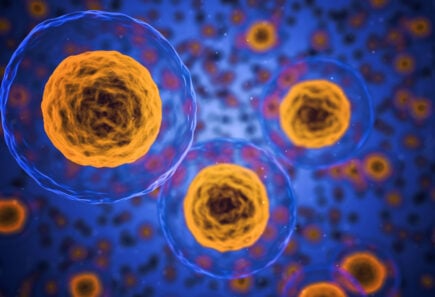
Expanding access to cell lines
Lack of access to cell lines is a major barrier to cultivated meat research. This initiative is increasing access and funding the development of new lines.
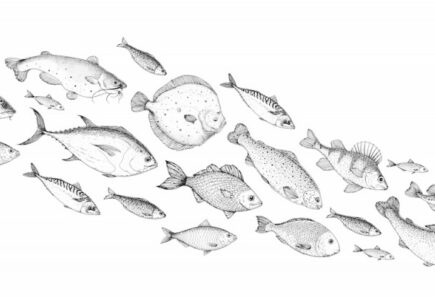
Introducing PISCES, a new data navigation tool to inform alternative seafood development
There’s a lot of research on the cellular and molecular components needed to match conventional seafood’s taste, texture, and aroma. We’ve put together a resource to help alternative seafood researchers…

Find collaborators
Join the GFIdeas global community of 2,000+ entrepreneurs, scientists, investors, and subject matter experts. Discuss projects on the members-only Slack community, attend monthly seminars, and use the community directory to help you find collaborators working on similar Solutions!
Related solutions
-
Cultivated
Open-access formulations & optimization methods for cell culture media and growth factor cocktails
The availability of more open-access formulations will provide a foundation to enable both academic researchers and startup companies to develop their own customized formulations with far less effort and cost.
Related GFI research grants

Machine learning for fish growth media
Learn about Dr. Reza Ovissipour’s research using machine learning to optimize growth media for fish cells at Virginia Tech.
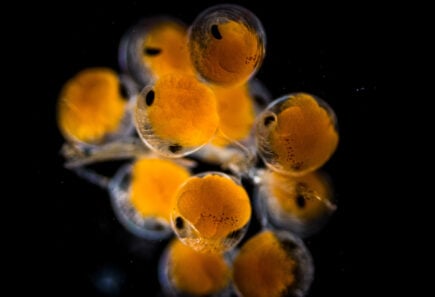
Differentiation and cell lines for cultivated carp
Learn about Dr. Mukunda Goswami’s research to develop cell lines from carp and characterize their differentiation at the Indian Council of Agricultural Research.
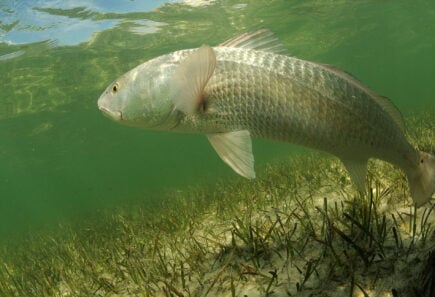
Seafood cell lines
Learn about Dr. Kevan Main and Dr. Cathy Walsh’s work at Mote Marine Laboratory to develop cell lines and methodology for cultivated seafood.
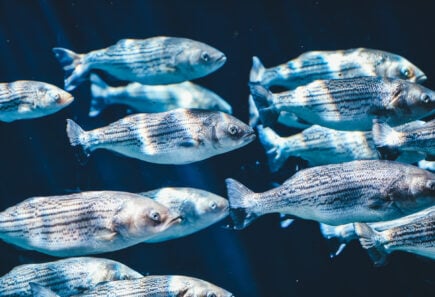
Low-cost differentiation medium for seafood culture
Learn about Dr. Rees’s research to develop low-cost differentiation media for cultivated seafood at Defined Bioscience.

Explore the full solutions database
Browse 100+ startup ideas, commercial opportunities, research projects, and investment priorities throughout the alternative protein supply chain.
Get involved
If you’d like to fund a research project, work on any of these solutions, share information about related efforts that are already underway, or elevate new ideas for advancing the alternative protein industry, we’d love to hear from you!
